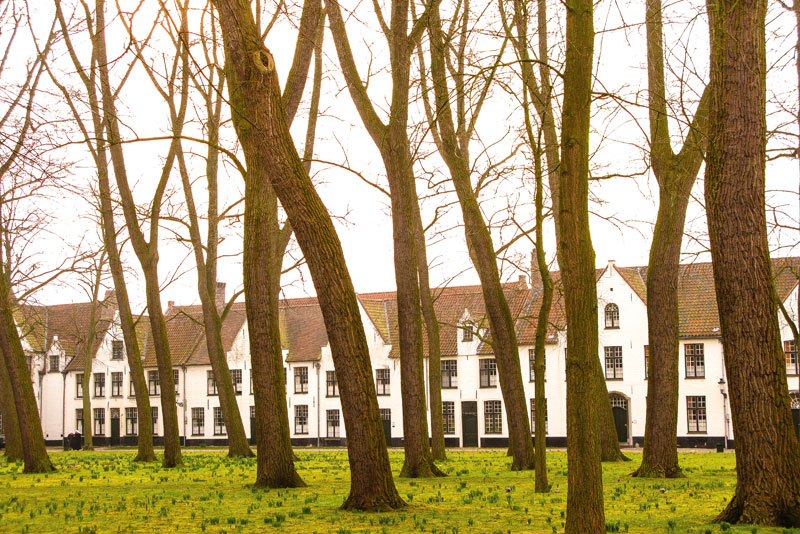When we mentioned to family and friends we are thinking of visiting, everyone, it seemed, loves Bruges, with its UNESCO World Heritage Listed historic centre, tour boats plying the canals and picture-postcard town square with horse-drawn carriages awaiting tourists. Everyone, that is, except for Ray, the Irish hitman played by Colin Farrell in the dark comedic movie, In Bruges. Ray and his much older and wiser partner-in-crime, Ken (Brendan Gleeson), have had a job in London go pear-shaped and are sent to Bruges to keep a low profile and await further instructions from their boss back in the UK.
For the rest of the plot, watch the DVD, but suffice to say, if you can cope with the effing dialogue, it would be hard to imagine a better promo for a city. We spend our entire time in Bruges, quoting lines, reliving scenes and identifying locations from the movie.
“It’s a fairytale town, isn’t it?”
The heart of Bruges’ historic centre is the cobblestoned Grote Markt or town square lined with guild buildings, mostly containing banks and restaurants. Wednesday is market day, continuing the tradition established in the 10th century of bringing fresh produce to the residents. Although the square is car-free, there’s no shortage of horse-drawn carriages waiting to take tourists for a spin around town and endless pelotons of bicycles, the locals’ preferred form of transport.
Dominating the square is the Cloth Hall, testament to Bruges’ significance as a medieval trade centre. Climb the 366 steps to the top of the 83-metre 12th-century belfry for a splendid view of the old town. There’s a 47-bell carillon in the tower and free concerts are held every week.
“And that vial, do you know what it’s said to contain?”
The adjoining Burg (Castle) Square contains the town hall, the bishop’s palace, the old civil registry and the Basilica of the Holy Blood.
At the Basilica, pilgrims reverently congregate around an altar that displays a vial allegedly containing a relict of cloth stained with the blood of Jesus and brought back from Jerusalem by 12th-century crusaders. The vial forms the centrepiece of a procession held through the streets of Bruges each year on Ascension Day.
“Going around in a boat looking at stuff.”
As Bruges is located 15 kilometres inland from the Belgian coastline, a network of canals was devised to allow trade ships to reach the centre of the city. These days the canals are purely for tourist boats, which provide privileged views of the historic city, medieval buildings and fairytale bridges. Five families, with four boats each, have exclusive rights to the canal tours.
“Plenty of alcoves in Bruges.”
Not to mention the museums and galleries. In no particular order, head to the Frietmuseum (dedicated to Belgian fries and their place in art, music and film), Choco-Story (to learn about Belgium’s world-renowned chocolate), the adjacent Lumina Domestica (which traces the history of domestic lighting from the oil lamp to the LED), the Diamond Museum (as Bruges is Europe’s oldest diamond trading centre) and the Lace Centre (handmade by elderly ladies using bobbins in Bruges and needles in Brussels). Then hightail it to Expo Picasso on the site of the former St John’s Hospital, where more than 120 works by Pablo are displayed alongside those of his friends including Matisse, Miro, Rodin and Chagall. Or visit the whitewashed houses, tranquil gardens and museum of the Princely Beguinage Ten Wijngaarde, established for lay Catholic sisters in 1245 and now home to an order of Benedictine nuns.
Read more about all that Bruges has to offer in the May/June 2013 issue of Australian Country magazine, available for order and online now!
Words Kirsty McKenzie
Photography Ken Brass

